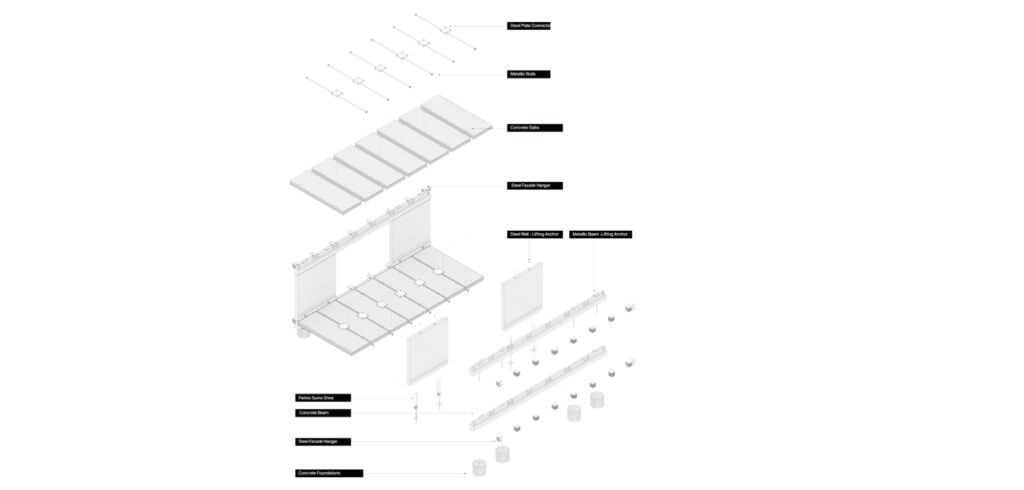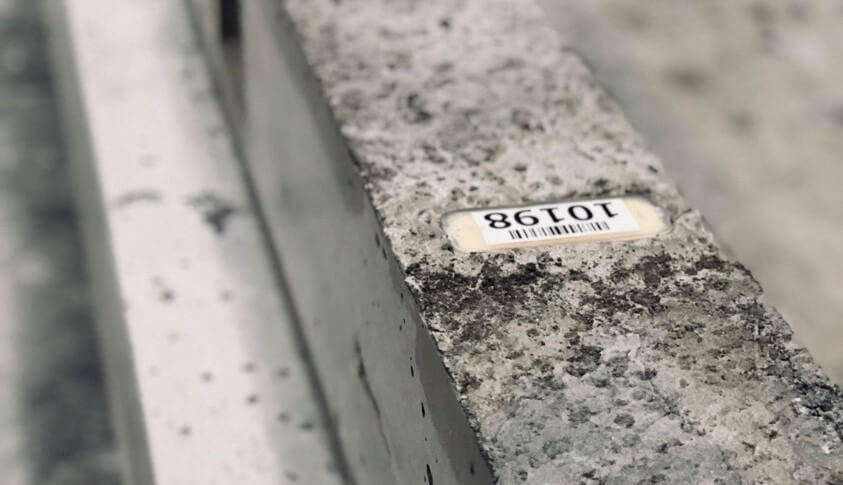Problem
The current prevailing linear economy means that building materials end up as waste after the demolition of buildings and are not reused. This not only burdens ecosystems or increases resource scarcity and environmental costs, but it also destroys economic values. How can the reuse of materials and thus the conservation of resources be promoted in order to achieve a circular economy in the construction sector in the long term?
Generic Description
A material passport is a documentation of the component and material history along the product life cycle. All physical properties of the elements of a building that are relevant for maintenance, deconstruction and reuse are mapped as digital information, which can be integrated into a VDC or BIM model via a collective database (Jensen Sommer 2016, p. 121 ff). This creates a digital twin of the building that ensures access to all relevant technical information and creates transparency about which materials were used in the building. With the data collected on material science and construction details, life cycle assessments (LCA) can be created at an early stage, and by linking them to economic data, life cycle costs (LCC) can be optimised. Specifically, a material passport includes information on the supplier and manufacturer of the material, on properties and conditions of the materials such as chemical and technical specifications, the environmental impact during production and service life. It also includes a description of quality assurance and relevant certificates as well as instructions for assembly, disassembly, maintenance, reconstruction and reuse and provides a unique code to identify the exact position in the structure (Jensen Sommer 2016 p. 121).
Example
In the CRCLR House project in Berlin, the planning of the entire structural and technical building concept is based on a circular approach (eZeit Ingenieure GmbH, CRCLR GmbH 2018). Among other things, the existing material stock was documented before the conversion phase, but no comprehensive digital material passport was used.
The Circle House (Lisbjerg) was also built according to the principles of the Circular Economy. It is designed to be demountable and its structural components can be reused with little loss of value. For example, a chip has been embedded in the concrete elements, which is linked to the digital material passport and information about the concrete composition, structural integrity and building plan.

Lessons learned and synergies
The digital material passport is a tool for increasing resource efficiency and supporting the circular economy (Winter 2015). With its help, material flow management can be optimised and the value of materials, products and components can be preserved through their reuse or recycling. The transparent presentation of product components supports the selection of healthy and sustainable building materials and thus enables better avoidance or control of hazardous materials. Consistent and widespread application of this tool enables the creation of material databases and can contribute to the conservation of primary resources. Prerequisites for the implementation of a digital material passport are that the regulatory framework conditions for it are created and that the corresponding technologies are available, e.g. through generally and standardised electronically readable markings such as barcodes (Götz, Adisorn, Tholen 2021, p. 40).
Sources
BLOXHUB (2021): Circle House. Accessed on 13.12.2021 from https://bloxhub.org/circle-house-lab-circle-house/#
CRCLR GmbH (2018): Towards a Circular Economy!. Accessed on 13.01.2021 from https://crclr.org/article/2019-05-22-towards-a-circular-economy
Götz, Thomas; Adisorn, Thomas; Tholen, Lena (2021): Der Digitale Produktpass als Politik-Konzept. Kurzstudie im Rahmen der
Umweltpolitischen Digitalagenda des Bundesministeriums für Umwelt, Naturschutz und nukleare Sicherheit (BMU); 20_Wuppertal Report, März 2021. Accessed on 08.05.2022 from https://epub.wupperinst.org/frontdoor/deliver/index/docId/7694/file/WR20.pdf
GXN (2018): Circle House – Denmark’s first circular housing project. 1st edition.
Jensen, Kasper Guldager; Sommer, John (Ed.) (2016): Building a Circular Future. (1 ed.) GXN, Published in 2016 with support from the Danish Environmental Protection Agency. Accessed on 13.12.2021 from https://issuu.com/3xnarchitects/docs/buildingacircularfuture/283
TRNSFRM eG (2018): Zirkuläres Bauen. Accessed on 13.01.2021 from https://www.trnsfrm.org/zirkulaeres-bauen/ Winter, Stefan (2015): Stoffpass Gebäude Entwicklung von Grundlagen für das operative Ressourcenmanagement im Real-estate development und Baukonstruktion. Abschlussbericht eines DBU-geförderten Forschungsprojekts, Förderkennzeichen FKZ/AZ 31077.
Accessed on 08.05.2022 from https://www.dbu.de/OPAC/ab/DBU-Abschlussbericht-AZ-31077.pdf
